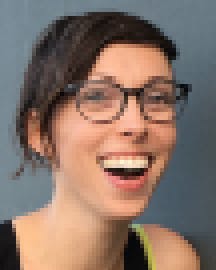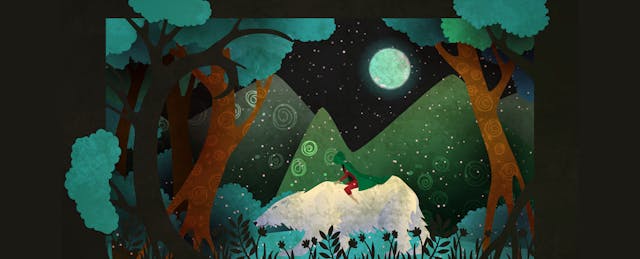Kristin Leong is the definition of a multi-faceted educator. She’s held a variety of roles in which she “educated” her audiences—from her stint as a middle school humanities teacher, to her days as Town Hall Seattle’s Community Programs Curator and Residency Program Lead, to her work as the founder of a storytelling project that aims to close the cultural gaps that often separate students and teachers.
And yes, even her years as a nightclub bartender—which she spoke about during an Ignite talk in Seattle—had some teachable moments in them. “Being able to communicate really clearly with people who are drinking a lot is super similar to being able to communicate really clearly with people who are going through puberty,” she says.
But throughout all of these roles, one theme has stayed consistent, no matter the audience: her passion for storytelling as a medium for solving some of the biggest problems in education.
So, what can others gather from her experiences? Leong, who will be keynoting the EdSurge Fusion conference this November, recently shared with us a teaser of all teachers can capture—and share—the powerful magic of storytelling.
The Job of Teacher as Story Facilitator

Currently, Leong is a storyteller through KUOW Public Radio, where she serves as Community Engagement Producer. Her job is to make sure that “public radio is, here at KUOW, is a two-dimensional conversation,” she says. “We’re not just putting out reliable information and great stories into the world, but actually, it is a two-way interaction.”
In many ways, that idea of “two-way interaction” is a lesson that Leong has been honing since her teaching days.
Back when Leong was a middle school teacher, she developed a keen interest in understanding how coaxing out students’ stories could give them a sense of agency. “My job is to facilitate students being able to tell their own story,” she says. “I can’t imagine actually any job where empathizing with others and encouraging other people to be their best selves (which is what teachers do) wouldn’t serve your work.”
But it wasn’t just about student agency. Her interest in classroom storytelling, and the role of the teacher as a storyteller, came down to that unfortunate cultural gap that sometimes exists between a teacher and a student. After all, when a large majority of the teaching force is white and/or female, in classrooms that are often much more diverse, those differences can exacerbate those gaps.
“When I was a teacher, my students were mixed race. My students were queer,” Leong recalls. “I was just wondering, there are so many great teachers all around me. But, how are they also connecting with kids that for the most part don’t look like them, and don't come from where they come from?”
That was the impetus behind Roll Call, which Leong started in 2017 as her innovation project for TED-Ed, the youth and education initiative affiliated with TED.
The Most Powerful Stories She’s Heard
What do you have in common with your students/teachers?
Does it matter that students and teachers have things in common?
Those two simple questions that Leong asks of all Roll Call subjects help her understand and share stories about how students and teachers connect, despite whatever differences they have. “I started actually talking to students and teachers about these questions, my own students included, my own colleagues included,” Leong says.
And the result? Kids, she said, were hungry to connect not only with each other, but with their teachers. She explains:
“People think about kids and think, ‘Oh, they’re so rebellious and so challenging’... I saw kids who wanted relationships and deep interactions with the adults and peers in their lives. And so, the project evolved really quickly into not just a critique (although it’s still that) of the [education] system, but also a celebration of the ways that students and teachers are connecting across these divides.”
This especially hit close to home for Leong, given that the most powerful Roll Call story she heard came from one of her own students—an Asian sixth grader who was well-behaved but extremely quiet. Leong, who is half-Asian herself, learned just how connected this student felt to her as a teacher of color.
“In her story, she wrote about how I was the first Asian teacher that she had had. She was in sixth grade, and before that she had never had a teacher who spoke her home language. She’d never had a teacher that looked like her,” Leong remembers. “Her response was almost like a poem.”
The Ultimate Role of Storytelling in Education
Leong believes there is a student like her sixth grader for every teacher—a story left unsaid or waiting to be told.
But she’s also emphatic about the fact that anyone can tell or listen to a story—it’s something that any teacher, administrator, or general education enthusiast can do immediately. And in today’s day and age, when the digital world can oftentimes drive folks further apart rather than bringing them together, storytelling can be a powerful antidote to those feelings of isolation and conflict.
“What I’ve learned through all of these storytelling projects is that everybody feels like a misfit. Everybody feels like they’re just faking it ‘till they make it. Everybody’s afraid they’re going to be found out to be this big imposter.”
“But that’s the human condition,” she says with a smile, adding that “I’m a misfit, too.”
Curious to learn more from Leong, and hear more of her tactics for storytelling in education? Join us for EdSurge Fusion on November 4-6 to see her speak!


